Giochi dell'Oca e di percorso
(by Luigi Ciompi & Adrian Seville)
(by Luigi Ciompi & Adrian Seville)

|
Giochi dell'Oca e di percorso
(by Luigi Ciompi & Adrian Seville) |

|
 |

Torna alla ricerca giochi (back to game search) |
 |
| Fewa | ||
 |
Versione stampabile
 |
Invia una segnalazione

|
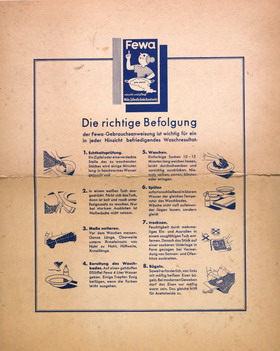 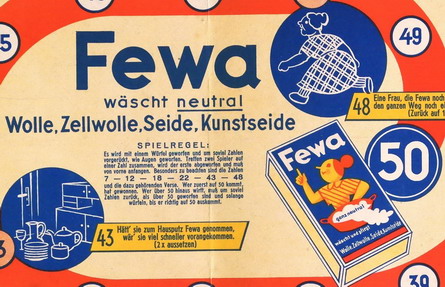 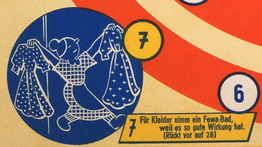 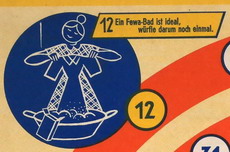 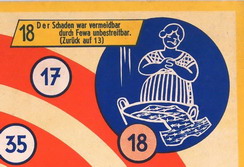 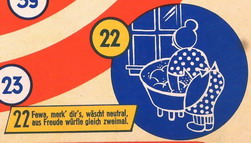 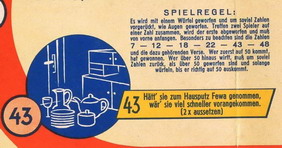 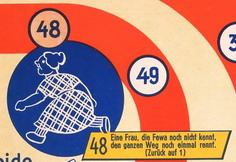   |
primo autore: | Anonimo |
| secondo autore: | Non indicato | |
| anno: | 1930/40 | |
| luogo: |
Germania |
|
| periodo: | XX secolo (2°/4) | |
| percorso: | Percorso di 50 caselle numerate | |
| materiale: | carta (paper) (papier) | |
| dimensioni: | 000X000 | |
| stampa: | Stampa tipografica | |
| luogo acquisto: | ||
| data acquisto: | ||
| dimensioni confezione: | ||
| numero caselle: | 50 | |
| categoria: | Pubblicità | |
| tipo di gioco: | Gioco di percorso | |
| editore: | BASF | |
| stampatore: | Non indicato | |
| proprietario: | Collezione A. Seville | |
| autore delle foto: | A. Seville | |
| numero di catalogo: | 2642 | |
| descrizione: |
Gioco di 50 caselle numerate, spirale, orario, centripeto pubblicitario del detergente FEWA. REGOLE: al centro. CASELLE: alcune con didascalia. REFERENZA 1 From ancient times, chemical additives were used to facilitate the mechanical washing of textile fibres with water. The earliest recorded evidence of the production of soap-like materials dates back to around 2800 BC in ancient Babylon. German chemical companies developed an alkyl sulfate surfactant in 1917, in response to shortages of soap ingredients during the Allied Blockade of Germany during World War I. In the 1930s, commercially viable routes to fatty alcohols were developed, and these new materials were converted to their sulfate esters, key ingredients in the commercially important German brand FEWA, produced by BASF, and Dreft, the U.S. brand produced by Procter and Gamble. Such detergents were mainly used in industry until after World War II. By then, new developments and the later conversion of aviation fuel plants to produce tetrapropylene, used in household detergents, caused a fast growth of domestic use in the late 1940s. Exhibitions: |
|
| bibliografia: | ||
Vai alla ricerca giochi Vai all'elenco autori